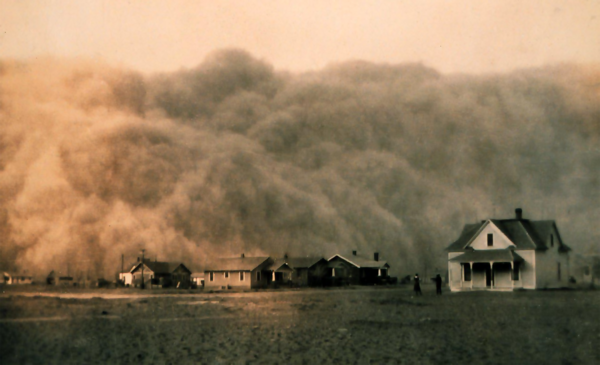Farmers and the New Deal
The New Deal set out to help the sections of society hit hardest by the Great Depression. This included farmers, who were excluded from the prosperity of the 1920s. Overproduction and high tariffs in Europe had left the farmers of the South and Midwest in poverty. Roosevelt put the needs of African Americans, minorities, organised labour and farmers on the political agenda with the New Deal.
Ed O’Neal, who was leader for the farmers’ union, stated in the January of 1933:
"Unless something is done for the American farmer we will have a revolution in the countryside within less than 12 months."
The New Deal’s popularity with farmers was due to the fact that he gave them a voice. In comparison, Hoover’s administration had ignored their plight.

As part of Roosevelt’s New Deal, the Agricultural Adjustment Act (AAA) was created in May 1933. The AAA essentially offered payment to farmers in exchange for them growing less crops, thus preventing the issue of overproduction which had been a major cause of the Great Depression that began in 1929.
As part of the fight to prevent a repeat of the overproduction fiasco, the AAA even paid farmers to actually destroy some of their crops and kill their animals. In 1933 alone, it is believed that $100 million was handed over to farmers through the AAA to get them to destroy their produce and thus stop a surplus building up, which would lead to lower and lower prices. This initiative also saw 6 million piglets bought by the government and then slaughtered, with the pork canned and then given away to the unemployed free of charge. Although, it made financial sense, many did not like this approach of seemingly needless destruction, which led to the chant of "Poor Little Piggies" being used by people to voice their displeasure at the AAA.
Nevertheless, the AAA did improve the lives of farmers - the prices of produce increased and the benefits can ultimately be seen in the fact that evictions for farmers declined while their income increased.
However, despite its success, the AAA effectively came to an end in 1936, when the Supreme Court stated that it was unconstitutional. The reason was that it granted the federal government too much of control over the running of state issues.
One group that did not benefit from the AAA was sharecroppers - farmers who rented land or had mortgages, many of whom were African American. At first they gained employment when they were given the task of destroying farmers’ produce, however, when this was complete and agriculture was not in high demand - quite the opposite, in fact - they struggled to find an income.
Although the AAA did help turn around the fate of many farmers, another problem raised its head; in 1934, dust storms badly affected many farmers, particularly in areas like Oklahoma and Arkansas, destroying their farms. It is estimated that throughout the 1930s more than 350,000 farmers from the mid-America states headed west, especially California, where the weather created a more friendly farming environment.
See also: The New Deal
MLA Citation/Reference
"Farmers and the New Deal". HistoryLearning.com. 2026. Web.
